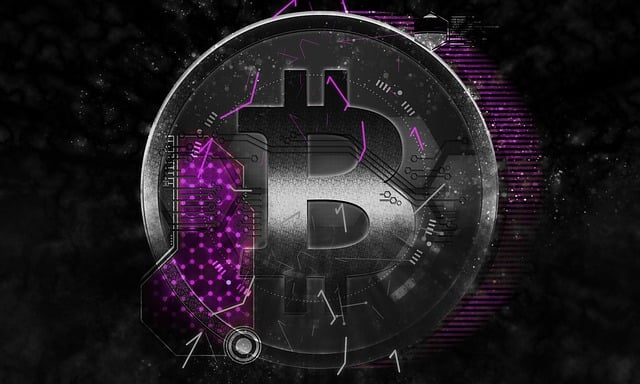The text explores the evolution of fundraising methods in the blockchain industry from Initial Coin Offerings (ICOs) to Security Token Offerings (STOs). ICOs, popular for their decentralized nature and token representation of project ownership, lack regulatory oversight, posing risks for investors. STOs, on the other hand, align with traditional securities laws, offering enhanced investor protection through compliance but may stifle innovation. The comparison highlights key differences in structure, investment scale, regulation, and appeal to different types of investors based on risk tolerance and preference for regulatory certainty. Understanding this ICO vs STO comparison is crucial for navigating the shifting fundraising landscape in blockchain technology.
In the evolving landscape of fundraising, Initial Coin Offerings (ICOs) and Security Token Offerings (STOs) have emerged as game-changers. This article delves into the core differences between these two innovative methods, providing a comprehensive ICO vs STO comparison. We explore the regulatory environment surrounding each, analyze investor perspectives, and discuss their potential impact on the future of fundraising. By understanding these offerings, investors can navigate this dynamic space with informed decisions.
- Understanding ICOs: Initial Coin Offerings Explained
- Unveiling STOs: Security Token Offerings and Their Key Differences
- Regulatory Landscape: How Do They Stack Up?
- Investor Perspective: Risks, Rewards, and Considerations
- The Future of Fundraising: A Comprehensive Comparison
Understanding ICOs: Initial Coin Offerings Explained

Initial Coin Offerings (ICOs) have gained significant attention in recent years as a novel fundraising mechanism for startups and ventures in the blockchain space. Unlike traditional methods like equity crowdfunding or venture capital, ICOs involve the sale of digital tokens to investors in exchange for established cryptocurrencies like Ethereum or Bitcoin. These tokens often represent ownership in a new project or company, and their value is expected to appreciate over time as the venture grows.
When compared to Initial Public Offerings (IPOs) or Security Token Offerings (STOs), ICOs are generally considered more decentralized and accessible. STOs, similar to traditional IPOs, involve the sale of securities that comply with regulatory requirements, offering a higher level of protection for investors. In contrast, ICOs often fall into a legal grey area due to their decentralized nature and lack of oversight, which can both attract innovative projects and pose risks for unwary investors.
Unveiling STOs: Security Token Offerings and Their Key Differences

In recent years, the cryptocurrency space has witnessed a significant evolution in funding mechanisms, with Initial Coin Offerings (ICOs) transitioning towards a new era—Security Token Offerings (STOs). This shift is not just semantic; it reflects a deeper transformation in how digital assets are structured and regulated. STOs represent a more sophisticated approach to raising capital by tokenizing real-world assets like equity, debt, or commodities. Unlike ICOs, which primarily focused on utility tokens, STOs introduce the concept of security tokens, designed to comply with existing securities laws. This change is pivotal in attracting institutional investors who prioritize legal frameworks and regulatory compliance.
When comparing ICOs vs. STOs, several key differences emerge. While ICOs were often associated with speculative projects and decentralized finance (DeFi) innovations, STOs are more focused on representing ownership stakes in established companies or assets. This distinction is crucial in terms of investor protection and market stability. STOs also offer enhanced transparency due to their adherence to securities regulations, which mandate detailed disclosure of offering information. Furthermore, STOs can facilitate cross-border investments with easier transferability and liquidity compared to traditional securities, making them a potentially game-changing solution for global capital markets.
Regulatory Landscape: How Do They Stack Up?

The regulatory landscape for default management has seen a significant evolution, particularly with the rise of blockchain technology and its associated financial innovations. One key development is the comparison between Initial Coin Offerings (ICOs) and Security Token Offerings (STOs). ICOs, which are more decentralized and often attract smaller investments, have faced stringent scrutiny due to their lack of traditional securities regulations. In contrast, STOs represent a more structured approach, aligning with existing security laws, which provides enhanced investor protection but may limit the accessibility for smaller projects.
This dichotomy highlights the ongoing challenge of regulating emerging financial markets. While ICOs offer a more open and potentially disruptive platform, their unregulated nature has led to concerns over fraud and investor rights. On the other hand, STOs provide a more secure environment for investors but might hinder innovation by adopting traditional, established norms. The ongoing debate revolves around finding a balance that promotes investment safety without stifling the growth potential of cutting-edge financial technologies.
Investor Perspective: Risks, Rewards, and Considerations

From an investor’s perspective, understanding the risks and rewards associated with Initial Coin Offerings (ICOs) versus Security Token Offerings (STOs) is paramount. While ICOs have gained notoriety for their high-risk, high-reward profile, offering early access to novel blockchain projects, they’ve also faced regulatory scrutiny and numerous fraudulent schemes. In contrast, STOs represent a more regulated approach, aligning with traditional security laws, which can provide enhanced investor protection but may limit the innovative potential seen in ICOs.
When considering an investment, evaluating the project’s underlying technology, team expertise, token utility, and market demand is crucial. ICOs often cater to tech-savvy investors seeking exposure to cutting-edge projects, while STOs appeal to a broader audience due to their compliance with existing financial regulations. The ICO vs. STO comparison thus boils down to an investor’s risk tolerance, investment horizon, and preference for innovation versus regulatory certainty.
The Future of Fundraising: A Comprehensive Comparison

The future of fundraising is evolving, and two prominent methods are capturing the attention of investors: Initial Coin Offerings (ICO) and Security Token Offerings (STO). Both ICOs and STOs present unique opportunities for startups to gain capital, but they operate under distinct frameworks.
ICOs have gained significant traction in recent years as a disruptive way to raise funds. They offer a more accessible entry point for investors, allowing them to purchase digital tokens representing ownership or future profits of a project. However, ICOs are largely unregulated, leading to concerns about fraud and investor protection. On the other hand, STOs align with traditional securities laws, providing enhanced transparency and regulatory oversight. This comparative advantage positions STOs as a more secure and legitimate option for fundraising, attracting institutional investors and fostering long-term trust.
In the ever-evolving world of fundraising, the initial coin offering (ICO) and security token offering (STO) have emerged as game-changers. This comprehensive comparison has shed light on their distinct characteristics, regulatory frameworks, and investor considerations. When evaluating ICOs vs STOs, understanding these key differences is vital for navigating the future of investment opportunities. As regulations continue to shape this landscape, investors can make informed decisions by weighing the risks and rewards associated with each method, ultimately fostering a more secure and transparent fundraising ecosystem.
